UPSC Daily Current Affairs- 23rd February 2024 | Current Affairs & Hindu Analysis: Daily, Weekly & Monthly PDF Download
GS-I
Mahamastakabhisheka
Subject: History and Culture
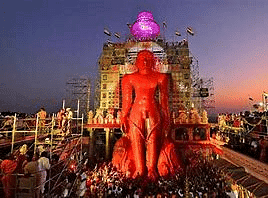
Why in News?
Nine-day mahamastakabhisheka celebrations begin at Venur in Karnataka
Background:-
- The Mahamastakabhisheka Mahotsava of Bhagavan Shri Bahubali Swami, the first Mokshagami and son of the first Theerthankara of Jainism, began with rituals at Venur in Dakshina Kannada district of Karnataka.
About Mahamastakabhisheka
- The Mahamastakabhisheka refers to the abhiṣheka (anointment) of the Jain images when held on a large scale.
- The most famous of such consecrations is the anointment of the located at Shravanabelagola(Hassan district) in Karnataka, India.
- It is an important Jain festival held once in every 12 years. It is an integral part of the ancient and composite Jain tradition.
- Karnataka has many important Jain pilgrim centres, temples and monuments.
- Shravanabelagola, Dharmasthala, Karkala, Moodbidri, Venur, Humcha and Narasimharajapura will astonish the visitors by their vast and abundant Jain heritage.
About Bahubali
- Bahubali, according to the traditions of Jainism,is the son of the first Tirthankara Rishabhanatha.
- After Bahubali won a duel with his half brother for control of the kingdom, he is believed by the Jains to have realized the transience of temporal affairs and renounced the world.
- According to legend, he then stood immobile, with feet straight ahead and arms at his side, meditating for an entire year in the Yogic position of kayotsarga (“dismissing the body”). He was so unmindful of the world around him that vines grew undisturbed up his arms and legs and anthills rose around his feet.
- His meditation led him to true victory over human passion and, according to the beliefs of the Digambara sect of Jainism, enabled him to become the first human of this kalpa (world age) to gain liberation.
Source: Brittanica
Badami Chalukyas
Subject: History
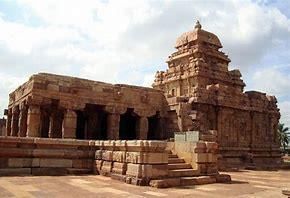
Why in News?
Two Badami Chalukya temples, at least 1,300-1,500 years old and a 1,200-year-old label inscription were recently discovered in Mudimanikyam village along the banks of Krishna.
About the Chalukya dynasty:
- The Chalukyas ruled over the central Indian plateau of the Deccan between the sixth and twelfth centuries.
- During that period, they ruled as three closely related but individual dynasties.
- The Chalukyas of Badami, who ruled between the sixth and the eighth centuries, and the two sibling dynasties of the Chalukyas of Kalyani, or the Western Chalukyas, and the Chalukyas of Vengi, or the Eastern Chalukyas.
Key Facts about Badami Chalukyas
- Origin:
- Pulakesi I established the Chalukya dynasty in 550.
- Pulakesi I took Vatapi (Badami in Bagalkot district, Karnataka) under his control and made it his capital.
- Historians refer to Pulakesi I and his descendants as the Chalukyas of Badami.
- They ruled over an empire that comprised the entire state of Karnataka and most of Andhra Pradesh in the Deccan.
- Pulakesi II had been perhaps the greatest emperor of the Badami Chalukyas.
- Pulakesi II extended the Chalukya Empire up to the northern extents of the Pallava kingdom and halted the southward march of Harsha by defeating him on the banks of the river Narmada.
- He then defeated the Vishnukundins in the southeastern Deccan.
- Pallava Narasimhavarman reversed that victory by attacking and occupying the Chalukya capital, Vatapi (Badami).
- Hiuen-Tsiang, a Chinese traveller, had visited the court of Pulakesi II.
- Later, Persian emperor Khosrau II exchanged ambassadors with Pulakesi II.
- The Badami Chalukya dynasty went into a brief decline following the death of Pulakesi II due to internal feuds.
- It recovered during the reign of Vikramaditya I, who succeeded in pushing the Pallavas out of Badami and restoring order to the empire.
- The empire reached its peak during the rule of the illustrious Vikramaditya II, who defeated Pallava Nandivarman II and captured Kanchipuram.
- The Rashtrakuta Dantidurga overthrew the last Badami Chalukya king, Kirtivarman I, in 753.
- At their peak, they ruled a vast empire stretching from the Kaveri to the Narmada.
- Art and Architecture:
- It saw the evolution and proliferation of a new style of architecture known as Vesara, a combination of the South Indian and the North Indian building styles.
- The rock-cut temples of Pattadakal, a UNESCO World Heritage Site, Badami, and Aihole constitute their most celebrated monuments.
- Government:
- The army consisted of infantry, cavalry, elephant corps, and a powerful navy.
- Hiuen-Tsiang mentions that the Chalukya army had hundreds of elephants intoxicated with liquor prior to the battle.
- Rashtrakuta inscriptions use the term Karnatabalato refer to their powerful armies.
- The government levied taxes called Herjunka, Kirukula, Bilkode, and Pannaya.
- The empire was divided into Maharashtrakas(provinces), then into smaller Rashtrakutas (Mandala), Vishaya (district), and Bhoga (group of ten villages).
- Many autonomous regions existed, ruled by feudatories like Alupas, Gangas, Banas, and Sendrakas.
- Local assemblies looked after local issues.
- Groups of mahajanas(learned brahmins) looked after agraharas (like Ghatika, a place of higher learning), like the ones at Badami (2000 mahajans) and Aihole (500 mahajanas).
- Coinage:
- The Badami Chalukyas minted coins of a different standard compared to the northern kingdoms.
- The coins had Nagari and Kannada legends. They minted coins with symbols of temples, lion or boar facing right, and the lotus.
- Religion:
- They initially followed Vedic Hinduism.
- Later, from the time of Vikramaditya I, the people took an inclination towards Shaivism, and sects like Pashupata, Kapalikas, and Kalamukhas existed.
- They actively encouraged Jainism, as attested to by one of the Badami cave temples and other Jain temples in the Aihole complex.
Source: Times of India
GS-II
Cabinet Committee on Security (CCS)
Subject: Polity and Governance
Why in News?
The Cabinet Committee on Security recently cleared the acquisition of over 200 BrahMos extended-range supersonic cruise missiles for deployment on its warships.
What are Cabinet Committees?
- Cabinet Committees are extra-constitutional, meaning, they are not mentioned in the Indian Constitution.
- They are partly designed to reduce the burden on the Union Cabinet by allowing smaller groups of ministers to make decisions on specific policy areas.
- They are constituted or reconstituted when a new government takes over or the Cabinet undergoes a reshuffle.
- The Prime Minister constitutes the Standing Committees of the Cabinet and sets out the specific functions assigned to them.
- The composition of cabinet committees in India can range from three to eight members, which typically consist of only Cabinet Ministers.
- However, non-cabinet ministers may also be appointed as members.
- All cabinet committees are chaired by the prime minister or a senior cabinet minister and will have a number of cabinet ministers as members. However, if the Prime Minister is a committee member, he will be the head of the committee.
- There are a total of eight cabinet committees, which are listed below:
- Appointments Committee of the Cabinet.
- Cabinet Committee on Economic Affairs.
- Cabinet Committee on Political Affairs.
- Cabinet Committee on Investment and Growth.
- Cabinet Committee on Security.
- Cabinet Committee on Parliamentary Affairs.
- Cabinet Committee on Employment and Skill Development.
- Cabinet Committee on Accommodation.
- Appointments Committee of the Cabinet
- Presently, all committees except the Cabinet Committee on Accommodation and the Cabinet Committee on Parliamentary Affairs are headed by the Prime Minister.
About Cabinet Committee on Security (CCS):
- CCS is headed by the Prime Minister.
- The Committee discusses, debates, and is the apex body when it comes to the appointments of the officials in the national security bodies.
- It also makes all the important decisions on defence policy and expenditure and, generally, all matters of India’s security.
- Members:
- Prime Minister of India
- Union Minister of Defence
- Union Minister of Home Affairs
- Union Minister of Finance and Corporate Affairs
- Union Minister of External Affairs
- Functions:
- The CCS deals with all the issues related to the defence and security of India.
- The CCS deals with all issues related to the law and order of our country and national security.
- It discusses different initiatives to take to enhance the national security of India.
- It also deals with policy matters of foreign affairs which may have a bearing on internal or external security implications, including cases relating to agreements with other countries on security-related issues.
- The Committee discusses the political issues which can impact the security of our nation.
- It reviews the conditions and the manpower of the national security bodies and makes the required changes to increase national security.
- The CCS considers each case that involves a capital expenditure of more than Rs 1,000 crore in respect of the Department of Defence Production and Department of Defence Research and Development.
- It also deals with every issue related to atomic energy and also considers cases of an increase in the firmed-up cost estimates or revised cost estimates.
Source: The Hindu
GS-III
The National Board for Wildlife (NBWL)
Subject: Environment
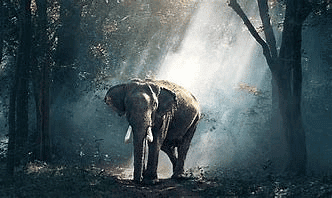
Why in News?
The National Board for Wildlife (NBWL) has approved an elevated road over nine corridors used by the animals of Kaziranga National Park and Tiger Reserve, usually during heavy floods.
Background:
- NBWL is the forest land diversion regulatory body for the country’s protected areas such as wildlife sanctuaries and national parks. Apart from regulating land diversion, the body looks after important policy decisions regarding wildlife conservation.
About National Board for Wildlife (NBWL)
- National Board for Wildlife (NBWL) is a statutory Board constituted on 22nd September 2003 under Section 5 of the Wild Life (Protection) Act, 1972.
- The NBWL is chaired by the Hon’ble Prime Minister.
- It has a total of 47 members, 19 of whom are ex-officio members. Every new government constitutes a new board, based on the provisions of the WLPA, with the new PM as the chair.
- It is responsible for guiding the government’s decisions on matters related to wildlife conservation, and issuing approvals for projects in protected areas. In practical terms, many of its tasks are delegated to a standing committee
- The standing committee of NBWL is chaired by the Minister of Environment Forest and Climate Change.
Source: DTE
Kaziranga National Park
Subject: Environment
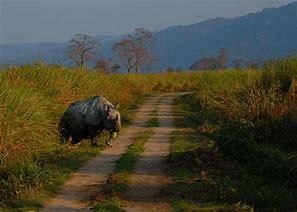
Why in News?
The National Board for Wildlife (NBWL) has approved an elevated road over nine corridors used by the animals of Kaziranga National Park and Tiger Reserve, usually during heavy floods.
Background:
- In the heart of Assam, this park is one of the last areas in eastern India undisturbed by a human presence.
About Kaziranga National Park
- Kaziranga National Park is a prestigious national park of India situated in the northeastern part of the country in the district of Golaghat and Nagoan in the state of Assam.
- It was declared a National Park in 1974.
- It was declared a tiger reserve in 2007.
- Kaziranga was declared a World Heritage Site by UNESCO for its unique natural environment in the year of 1985.
- The park has been identified as an Important Bird Area by the Birdlife International Society as it is home to various species of migrating and inhabitant birds.
- It is situated on the banks of the river Brahmaputra.
- It is majorly known for the ‘big four’ species— Rhino, Elephant, Royal Bengal tiger, and Asiatic water buffalo.
- The National Highway 37 passes through it.
- The Diphlu River runs through it.
- The landscape is marked by: Tropical moist mixed deciduous forests and tropical semi-evergreen forests, tall grasses, open jungle, and short grasses .
Source: The Hindu
FAIR AND REMUNERATIVE PRICE (FRP)
Subject: Economy
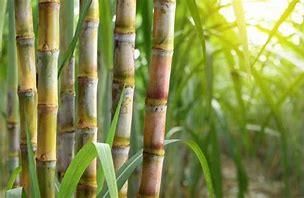
Why in News?
The Union Cabinet recently approved a hike in prices for sugarcane, known as fair and remunerative price (FRP), payable by millers to cane growers for the fiscal year 2024-25.
Background:
- The council of ministers cleared an FRP of ₹ 340 per quintal of sugarcane for the sugar year beginning on October 1, 2024. This is the highest FRP for sugarcane announced since 2014. The new FRP is 107% higher than the cost of production.
About FAIR AND REMUNERATIVE PRICE (FRP)
- The Fair and Remunerative Price (FRP) is the minimum price that sugar mills are required to pay to farmers for sugarcane.
- The FRP was introduced by the government in 2009 to replace the Statutory Minimum Price (SMP).
- It ensures timely payment to farmers, irrespective of the profit and loss to sugar mills.
- The Fair and Remunerative Price (FRP) is fixed by the Union government, specifically the Cabinet Committee on Economic Affairs (CCEA), based on the recommendations of the Commission for Agricultural Costs and Prices (CACP).
Sugar Cane production in India
- Sugarcane is grown as a Kharif crop in India.
- The geographical conditions for the growth of sugarcane are as follows:
- Temperature: Sugarcane requires a hot and humid climate with an average temperature of 21°C to 27°C.
- Rainfall: Around 75-150 cm of rainfall is favourable for sugarcane cultivation.
- The largest producer of sugarcane in India is Maharashtra followed by Uttar Pradesh and Karnataka.
Source: The Hindu
Tupolev Tu-160M
Subject: Science and Technology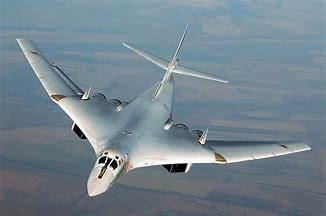
Why in News?
The Russian President recently unveiled the newly modernised Tupolev Tu-160M nuclear-capable strategic bomber at Kazan Aviation Plant.
About Tupolev Tu-160M:
- The Tu-160M, is a modernised version of a Cold War-era bomber that the former Soviet Union would have deployed in the event of nuclear war to deliver weapons at long distances.
- It is a Russian supersonic variable-sweep wing strategic missile-carrying bomber.
- It is called "White Swan” in Russia and is code-named “Blackjacks” by NATO.
- Russia claims it is the world’s fastest-flying supersonic and heaviest payload-carrying bomber.
- It is designed to hit targets in remote areas with nuclear and conventional weapons.
- Features:
- The Tu-160M, which has a crew of four, is capable of carrying 12 cruise missiles or 12 short-range nuclear missiles.
- It can fly 12,000 km (7,500 miles) non-stop, without refuelling.
- It is powered by four afterburning turbofan engines.
- It has a maximum speed of 2,220 kilometres per hour and ascends to heights of 16,000 metres.
- It showcases features like an innovative navigation system, an upgraded radar, and even a refuelling probe for in-flight refuelling, which further extends its range.
Source: Hindustan Times
Exercise Dosti
Subject: Defence and Security
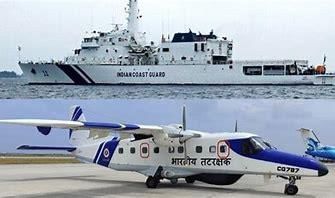
Why in News?
Indian and Sri Lankan coast guard ships reached the Maldives recently to take part in the trilateral coast guard exercise Dosti 16.
About Exercise Dosti:
- It is a trilateral coast guard exercise between India, Sri Lanka, and the Maldives.
- It is a biennial exercise.
- It was first conducted in 1991 between the Indian and Maldives Coast Guards. Sri Lanka joined the exercise for the first time in 2012.
- The exercises have focused on exercises and drills on providing assistance in sea accidents, eliminating sea pollution, and the Coast Guard’s procedures and conduct during situations such as oil spills.
- The aim of the exercise is to further fortify the friendship, enhance mutual operational capability, exercise interoperability and build cooperation between the Coast Guards of India, Sri Lanka, and the Maldives.
- Dosti 16:
- It is the 16th edition of the exercise.
- The Coast Guards of the Maldives, India, and Sri Lanka, along with observers from Bangladesh, are participating in Dosti 16 to enhance collaboration between the forces.
- India is sending ICGS Samarth, ICGS Abhinav, and ICG Dornier for the exercise
Source: ETV Bharat
|
44 videos|5271 docs|1113 tests
|
FAQs on UPSC Daily Current Affairs- 23rd February 2024 - Current Affairs & Hindu Analysis: Daily, Weekly & Monthly
| 1. What is Mahamastakabhisheka? |  |
| 2. Who were the Badami Chalukyas? |  |
| 3. What is the Cabinet Committee on Security (CCS)? |  |
| 4. What is the National Board for Wildlife (NBWL)? |  |
| 5. What is the significance of Kaziranga National Park? |  |
















